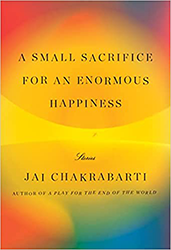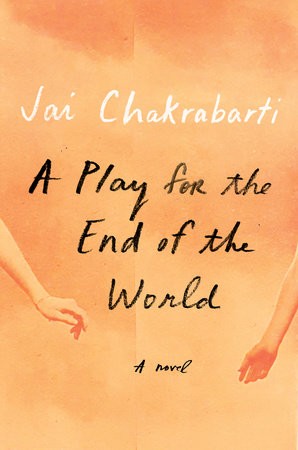
Matryoshka Dolls, 2009, Photo by CGP Grey
Jai Chakrabarti spoke with Jennifer Rosner about her new novel, Once We Were Home. They explored the historical sources and accounts of individuals who “worked to retireve Jewish children from the homes… who’d harbored them” after WWII that inspired Rosner’s characters, the struggle of these children to feel a sense of belonging, and the belief-systems that influenced how these adults acted on behalf of the children.
Jai Chakrabarti: How did this book first arrive for you — was it, for instance, through an image, an idea, an overheard story, or something else?
Jennifer Rosner: The first threads I wrote (the storylines of Oskar and Ana) were inspired by a conversation I had with a Holocaust survivor. She told me that, in the years after WWII, she worked to retrieve Jewish children from the homes of Christian Poles who’d harbored them. So much destruction had taken place on Polish soil, and antisemitism was still rampant; it felt imperative to retrieve the remaining children – whose parents had perished – and return them to their Jewish roots. Eventually (and often with intense negotiation) many of the Christian rescuers agreed to give up the children. However, in the face of refusals, other means were resorted to, including just taking the children as they could. The woman alluded to differing reactions by the children who were retrieved in this manner. I began to imagine how fraught it must have been, particularly for those children who’d formed close bonds with their Christian families after losing their families of origin.
I later delved into other cases in which children were stolen in wartime based on the mission or belief-system of various adults. The thread in my novel that tells Roger’s story is loosely based on the Finaly brothers, Robert and Gerald Finaly, who were hidden and then taken on the run by Church officials seeking to “save” them when Jewish relatives petitioned for their custody. The thread conveying Renata’s story is based on historical accounts of Polish Christian children who were wrenched from their families to be “Germanized” in accordance with a plan set out by Himmler. With each narrative, I’ve sought to explore particular children’s developing identities within a landscape where adults move them in accordance with some conception of either “redeeming” them or bolstering a group.
All that’s to say, I began with true accounts! As my fictional characters took shape, and particular objects acquired meaning in their lives and in their storylines, I also found images to be quite inspiring. I created a board with photographs of nesting dolls and boxes, spinning tops, feathers, French school books, and other objects.
JC: Matryoshka dolls play an important role throughout your book as a recurring theme and in some cases as a literal representation. The concept of nesting one body within another, or of a family protecting itself and determining who is “in” and who is “out” was an idea that I found compelling. Can you tell me more about why you chose this image?
JR: The idea of “fitting” was important from the start, most simply because the children’s survival depended on it. Additionally, there was the emotional longing for closeness, for feeling snug and safe amid danger. Renata’s dolls, nested one inside the other, represent family — especially a line of mothers — and shared origins, as the dolls are carved from the same wood. Yet, Renata has only the smallest, solid doll with her when she is taken away from her family.
Oskar’s nesting boxes are also designed to fit inside one another, largest to smallest, and his determination to master joinery mirrors a deep desire to find his way to fitting in and feeling grounded later in life — in Judaism, in Israel, and so on.
The Matryoshka is made from a tree’s wood, same as Oskar’s boxes, Ana’s spinning top, and Roger’s writing notebooks. Its narration of the interstitial chapters serves to connect the four children of the novel (while also revealing Renata’s secret past), and each of their ongoing searches for rootedness and place.
JC: Roger, the budding child philosopher, wonders, “Are there really roads to good and evil?” Once We Were Home beautifully explores moral ambiguities as they relate to Jewish children who were hidden with and tended to by Christian caretakers during the Holocaust. As a writer and as a philosopher, I’d love for you to delve deeper into Roger’s question.
JR: Roger struggles to understand his connection to the (Jewish) parents who he has lost and can barely remember. Most acutely, he struggles with his sense of identity, given his Jewish origins and Christian upbringing, and the Church’s activity after the war to keep him away from his relatives.
The idea of being on a wrong road, or of not being right at one’s core, is part of Roger’s struggle with his sense of self, and the nature of a soul. If Roger is “of his parents” and they couldn’t be Saved, how could he?
But he also questions how Faith can lead to keeping children (or taking them away) from where they feel rooted. This is relevant for the other storylines as well. As a budding philosopher, Roger considers the ways belonging might depend on identity, and so he delves into this subject matter, asking: what makes someone who he is, continuously over time? Can he be the same person if his beliefs in G‑d change?
As a philosopher, I sought to highlight the moral tension within the history that undergirds my novel. Jewish survivors felt an imperative to return Jewish children to their roots; Christians (truly believing in Salvation) feared for the souls of the children they harbored; the children, caught in the midst of it all, struggled profoundly with forming bonds and finding a sense of belonging.
After the Holocaust, the retrieval of every Jewish child felt crucial to the rebuilding of the nearly-annihilated Jewish community. But, for some children, being removed from families where they’d found love and a sense of home after enduring the loss of their first families was exceedingly painful.
JC: Through the characters in this novel, we explore belonging in its many forms. What does it mean to belong to a tribe? What does it mean to have a “Jewish soul?” I’d love for you to further explore these questions as they relate to Once We Were Home.
JR: I’d like to begin answering this question with something quite personal. Our two daughters were born deaf (due to recessive gene mutations common among Ashkenazic Jews) though my husband and I are “hearing.” As we sought to raise our daughters within our family, we met with the rare (but still-held) opinion that our children shouldn’t be raised by us; rather, they belong in the Deaf community and should be raised by Signing Deaf people. It was startling to me to think that “where our daughters belong” might be determined by the state of the cilia in their ears, rather than by factors such as attachment and emotional intimacy, not to mention our parentage! Yet, for the Deaf community as a collective, our two children (raised by hearing parents in a hearing, speaking world) could be lost to them – and there are real questions of whether that community will persist if deaf children (90% of whom are born to hearing parents) routinely integrate into the hearing world.
A major tension in Once We Were Home is that between collectives and individuals. After the Holocaust, the retrieval of every Jewish child felt crucial to the rebuilding of the nearly-annihilated Jewish community. But, for some individual children, being removed from families where they’d found love and a sense of home after enduring the loss of their first families was exceedingly painful.
That said, many of the reclaimed children embraced Judaism and found solace in a Jewish identity and the feeling of Jewish belonging. The ages at which they were hidden and retrieved, the nature of the connections they forged and how much they remembered of their roots, all played roles in the children’s adjustment. Many of the operatives who worked to return Jewish orphans to the fold sought to honor the last wish of the children’s deceased parents: to leave descendants.
JC: As I read this book, I felt not only the deep love and compassion you held for your major characters, but was also moved by the attention you gave your more minor ones. Tell us about your process for constructing a more minor (though important in many ways) character – like Eva – in this novel. Is there a character who you feel most close to?
JR: The woman I met – who worked in the post-war years to reclaim Jewish children – loosely inspired the character of Eva, though many other historical figures and sources also came into play in the development of her character and storyline. I came to adore this woman and we stayed in touch until her passing. I viewed her action as rich with moral complexity (while she may have viewed it, more simply, as “saving Jewish orphans”), and I understood her deep commitment to the Jewish people and to rebuilding Judaism.
Other secondary characters grew organically in relation to the major characters, based on who they needed in their lives as they inhabited their stories. Who else lived in the Polish village, the convent, the Children’s Homes? Who else worked on the archaeological dig, or sat around the seminar table at school? What role might these minor characters play in the emotional lives of my main characters, supporting them, challenging them, creating obstacles and also pathways to connection and growth? How might their actions and reactions deepen the themes of the story? In this novel, I love nearly all of the secondary and tertiary characters (apart from Madame Mercier!), and I value the texture they bring, though I probably feel closest to Szymon.
JC: Tell us about your research process. As you were connecting with primary or secondary sources, what surprised you or defied your original expectations of the subject matter?
JR: The numerous and varied stories of child displacements during and after WWII stunned me. I worked with several historians to dig deeply into the emotional aftermath of such events. Many generous, thoughtful scholars from around the world gave their time, reading my work and talking with me about the fiction I was creating, rooted in these true events. In my extensive reading, I was quite moved by the archival testimony of several Jewish operatives who clearly understood the challenges of the children’s re-integration. In research into the Germanization program, I was struck by how UNRRA workers, charged with retrieving Polish children from German homes and returning them to their birth families, faced the same painful prospects of creating additional ruptures for children who’d already endured significant trauma.
On a research trip to Israel, I found the politics of archaeological exploration in Jerusalem after the 1967 war (just prior to Renata’s dig) to be very interesting. Another thing that defied my expectations was how delicious the shakshuka was, which I enjoyed on the beach in Tel Aviv!
Jai Chakrabarti is the author of the novel A Play for the End of the World, which won the National Jewish Book Award for debut fiction, was long-listed for the PEN/Faulkner Award and short-listed for the Tagore Prize. He is also the author of the story collection A Small Sacrifice for an Enormous Happiness. His short fiction has received both an O. Henry Award and a Pushcart Prize and has been anthologized in the Best American Short Stories and performed on Selected Shorts by Symphony Space. His nonfiction has been published in The Wall Street Journal, Fast Company, and elsewhere. Born in Kolkata, India, he now lives in New York with his family.



